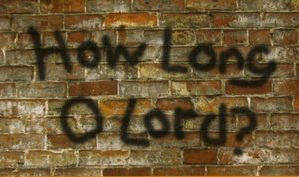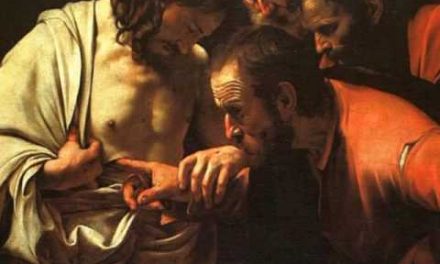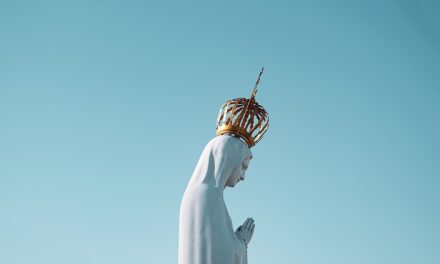The Nativity of the Lord – Christmas
December 25, 2011
Vigil Mass: Is 62:1-5; Ps 89:4-5,16-17,27,29; Acts 13:16-17,22-25; Mt 1:1-25 or Mt 1:18-25
Mass at Midnight: Is 9:1-6; Ps 96:1-2,2-3,11-12,13; Ti 2:11-14; Lk 2:1-14
Mass at Dawn: Is 62:11-12; Ps 97:1,6,11-12; Ti 3:4-7; Lk 2:15-20
Mass During the Day: Is 52:7-10; Ps 98:1,2-3,3-4,5-6; Heb 1:1-6; Jn 1:1-18 or Jn 1:1-5,9-14
The people who walked in darkness have seen a great light;
upon those who dwelt in the land of gloom a light has shone.
You have brought them abundant joy and great rejoicing,
as they rejoice before you as at the harvest, as people make merry when dividing spoils.
These words from Isaiah 9 will begin the First Reading at our Midnight Mass. And in these opening verses, we find two great themes that run through all the various Christmas readings: light and rejoicing. These are not simply words for our liturgy and ritual; they are not mere adornments for this great Nativity feast. The light of Christmas and the rejoicing that it begets speak to us of the significance of this holy day for our moral lives.
Rejoice!
Isaiah makes clear that we find ourselves in a time for great rejoicing. In addition to Isaiah 9, we hear in Isaiah 52 “Hark! Your sentinels raise a cry, together they shout for joy, for they see directly, before their eyes, the Lord restoring Zion. Break out together in song, O ruins of Jerusalem!” In Psalms 96 and 97 we pray for the earth to rejoice (“Let the heavens be glad and the earth rejoice; let the sea and what fills it resound; let the plains be joyful and all that is in them! Then shall all the trees of the forest exult,” Ps 96:11-12). John the Baptist has been crying out as we approached this day. Today we can imagine the cries of a woman in labor and then that sweet cry of a baby with its first breath. And to all of it we cry out with abundant joy! Let us rejoice! It seems the “silent night” of Christmas may not do it justice.
The call to rejoice carries with it some critical ideas about who we are called to be as people of faith. The act of rejoicing speaks of two simultaneous realities. First, the one who rejoices is a recipient. She is seized with an irresistible joy in response to a mighty goodness that is presented, bestowed, and intimately shared. Rejoicing gives evidence of relationship since it is brought about by the other. And it implies the profundity and dependence of that relationship since the depth of our own joy is not something we can generate for ourselves. To rejoice is to lay one’s very being open to the goodness of God. This might be called the vertical nature of rejoicing.
The second reality is horizontal in nature. Rejoicing is not an act that can be done in secret. Once seized by joy, our very being is a proclamation to others of the good news we have received. The cry of joy is simply too powerful to keep quiet and we boldly shout out, perhaps despite ourselves. He who rejoices cannot contain the gladness bestowed; as soon as he encounters such profound goodness he knows it was never intended just for him. And the power of rejoicing is never diminished but only grows with its dissemination. So ultimately, goodness and joy are not competitive goods but ones that flourish in broad solidarity. Rejoicing gives evidence of our integral relationships with the human family and, indeed, all of creation (recall the sea and the trees of the forest exult as well).
This Christmas we are called again to delight with vigor in our task of rejoicing. It has everything to do with who we are willing to be as creatures of God and as brothers and sisters to one another.
Light
In an apt phrase, Thomas Keating speaks of the “explosion of divine light at Christmas.” As Isaiah proclaimed above, a light has shone on those in gloom and a great light is seen by those who have walked in darkness. The opening verses of the Gospel of John also refer to this divine light: “What came to be through him was life, and this life was the light of the human race; the light shines in the darkness, and the darkness has not overcome it.” And in the Christmas mass at dawn, the responsorial psalm proclaims: “A light will shine on us this day: the Lord is born for us.”
For those of us in the northern hemisphere, we have the added experience of this growing light in the world. In one of his Christmas sermons (Sermon 190), St. Augustine, makes note of this important symbolism.
Because even the day of his birth contains the mystery of his light. That, you see, is what the apostle says: The night is far advanced, while the day has drawn near; let us throw off the works of darkness and put on the armor of light; let us walk decently as in the day (Rom 13:12-13). Let us recognize the day, and let us be the day. We were night, you see, when we were living as unbelievers. And this unbelief, which has covered the whole world as a kind of night, was to be diminished by the growth of faith; that’s why, on the day we celebrate the birth of our Lord Jesus Christ, the night begins to be encroached upon, and the day to grow longer.
Appealing in part to this same passage from Romans, St. Thomas Aquinas also contemplates the light in a Christmas sermon as he lays out three ways that Jesus Christ Incarnate was Light, enlightening humanity: “Our Blessed Lord enlightens in three ways: 1. By expelling the night of sin. 2. By bringing in the day of grace – “The night is far spent, the day at hand” (Rom.13:12) 3. By diffusing great lights, which are the Saints, throughout the world – “Among whom ye shine as lights in the world” (Phil. 2:15). Like the vertical and horizontal relations of rejoicing, the light too reminds us of God’s gratuitous love and the love that we are to bring to the world as people of faith.
The light of Christmas has everything to do with our constant struggle to overcome. It is a struggle to overcome our own darkness and sin, to overcome despair and longstanding grief, to overcome repression and injustice. And it is a reminder that there is only one source of light that is capable of it. It is a reminder that God finds the darkest places, the places on the margins, the places that seem devoid of glory or holiness, and it is there that God ignites a light.
This Christmas I keep going back to a moment a few weeks ago during an Advent gathering of Catholic chaplaincy volunteers from the local prison facilities. Joining our small circle was a man who had recently been released from well over a decade behind bars. As he spoke with gratitude and hope, there was a remarkable light in his eyes and a deep spirit of rejoicing. He recounted the darkness of his long years in prison; he recalled self-imposed suffering and the suffering imposed by others. But in the familiar faces of volunteers he saw in the room, he spoke of receiving glimpses of God’s presence. And he concluded by proclaiming that “THIS IS CHRISTMAS.” For him, sitting there and being reminded of God’s love, even in its weak flickers in the world, was the essence of Christmas. It is a wise observation for us all.
As we celebrate this holy Christmas feast, let us remember that we are being called to receive that light and be seized by joy. And, then, in lives of solidarity and justice, let us strive to grow that light and to spread the rejoicing far and wide.




